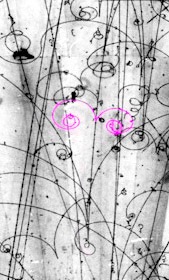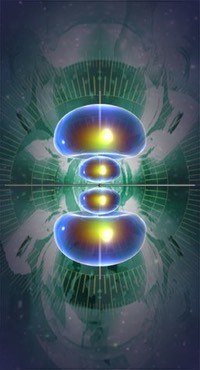In our analyses of physics, we have also introduced the concept that the electron is the only true elemental particle, and all other particles are merely various electron compounds. We have shown that the famous Heisenberg Uncertainty Principle is unsuitable to describe the motion of the electron.
The analysis of the geometric ratios of the electric wave and electron-positron (e-p) pairs shows remarkable similarities. This leads us to the conclusion that the electric wave is likely the product of an e-p pair, and further suggests that the atom is made up of e-p pairs. If this were the case, then we can identify the physical basis for forward and reverse time. By suitable EM modulation, the atomic orbits of e-p pairs could be switched to cause time travel control.
Our interest in material sciences led us to a new theory of the atom that provides a theoretical framework for the design of low energy nuclear reactions. We have proposed that atoms are complex electromagnetic waveforms that are circulators of the space/STAR lattice, the carrier medium for electromagnetic interactions. We have also suggested that only electromagnetic energy exists, and therefore electromagnetic pressure waves of appropriate frequency and amplitudes should induce atomic transformation.
In addition, the atom should be viewed as a whole, irrespective of whether chemical or nuclear reactions are concerned. For this reason, we introduced the term low energy atomic transformation to replace the currently used term “nuclear reaction” to describe the synthesis of elements under conditions akin to chemical catalysis.
We have hypothesized that sufficient electric pressure could be generated by utilizing high ionic activities of molecules, a method commonly used in chemical catalysis. Following this idea, a single catalytic step may be enough to produce elements of lower atomic masses, and such a procedure was published. The synthesis of elements of higher atomic masses requires an additional catalytic step.

